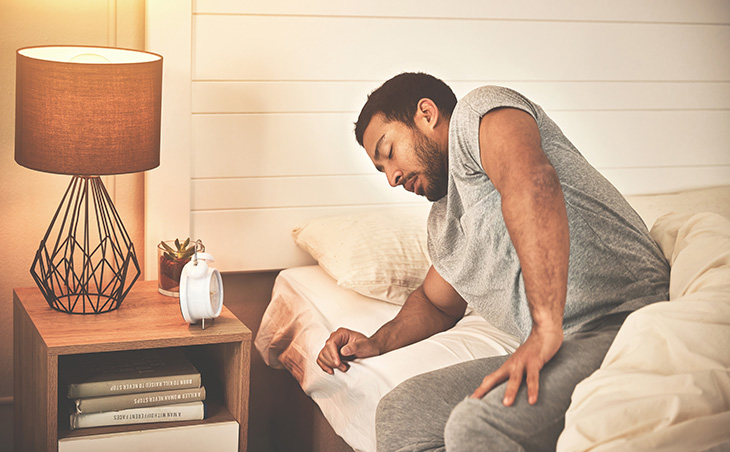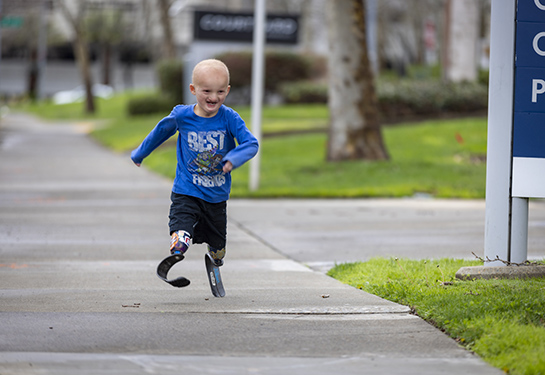How can you make the switch to daylight saving time less painful?
A UC Davis Health sleep researcher offers tips to help you adjust to the time change more easily
It’s not your imagination. The transition to daylight saving time really is tough on our bodies and our minds. This Sunday, March 12, at 2:00 a.m., most of the United States will move the clock forward an hour. It’s not just the lost hour of sleep that’s difficult. The abrupt shift leads to a host of challenges, including serious health impacts for some of us.
Luckily, there are some things you can do to make the transition a little less painful.
In the latest episode of the UC Davis podcast “Unfold,” Heinrich Gompf, a sleep researcher in the Department of Neurological Surgery, weighs in. In this Q&A adapted from the podcast, Gompf shares insights about the health effects of the time change, what’s really going on in our brains when the clock changes and some strategies to help us bear it better.

What are some of the health impacts of the time change?
You have more car accidents, in part, probably because people are driving to work in the dark. There are more people going to the emergency room in the first few days after the time change. [There are] more heart attacks and more strokes as well. For a third of people, their self-reported satisfaction with life is lower for a couple of weeks after the clock change. It’s certainly possible that people who are already struggling with mental health issues may struggle some more because of the misalignment of their circadian rhythms with the clock.
Is that why the time change is so tough? Our circadian rhythm is off?
Yes. We have these circadian rhythms. They’re approximately 24 hours long and they’ve been with us evolutionarily since the very first organisms billions of years ago. They’re there to adapt slowly to changes in the lighting throughout the year, the seasonal differences. [The rhythm] doesn’t do well when you switch it very quickly like when you travel across time zones or when you have the switch from standard time to saving time in the spring.
Why does the clock change challenge our circadian rhythm so much?
Your rhythm gets reset every day, and the light in the morning is particularly important. After the clock change, that happens at a later time relative to the nominal clock time. So, if you normally wake up at 7:00 in the morning, your system, your internal clock, is maybe wanting to have a certain amount of light, but you won’t get that light until about 8:00 in the morning. Your internal clock takes a few days up to a couple of weeks to adjust fully to the new external clock. And yet you still have the same obligations every day at a certain time of day, right? So, you have a bit of a disconnect between your own internal rhythm and the external world.

What can we do to prepare for the change to daylight saving time?
Some people suggest trying to get to bed a little earlier for a number of days before clock switch happens. Another thing to do is to try to get out early in the morning and get as much daylight early in the day as you can. The switch happens over a Saturday to Sunday night so you can wake up and just go out to your yard or balcony and try to absorb some daylight that you otherwise might not be doing. There’s no one size fits all.
What else can we do to help reset our internal clocks?
One of the things that can reset your circadian rhythms relatively quickly, besides light, is actually food. The night before the time change, you could have a slightly earlier dinner, a lighter dinner. Instead of a big bowl of pasta, you know, maybe just have a salad and some fruit. Then [the morning after the time change] if you normally have breakfast at 8:00, eat breakfast at 8:00, even if you may not really be quite hungry yet, eat at that time. That may actually be enough to make that transition happen a little bit faster.
Listen to the full podcast episode about daylight saving time.
Related Resources
- Unfold podcast
- Good sleep in an age of anxiety
- Healthy aging: Getting sleep
- Sleep Research Society
- American Academy of Sleep Medicine
- National Sleep Foundation
- Daylight Saving Time: Don’t Lose Sleep Over It (from the American Academy of Pediatrics)
- Learn more about the UC Davis Health Sleep Medicine Clinic



